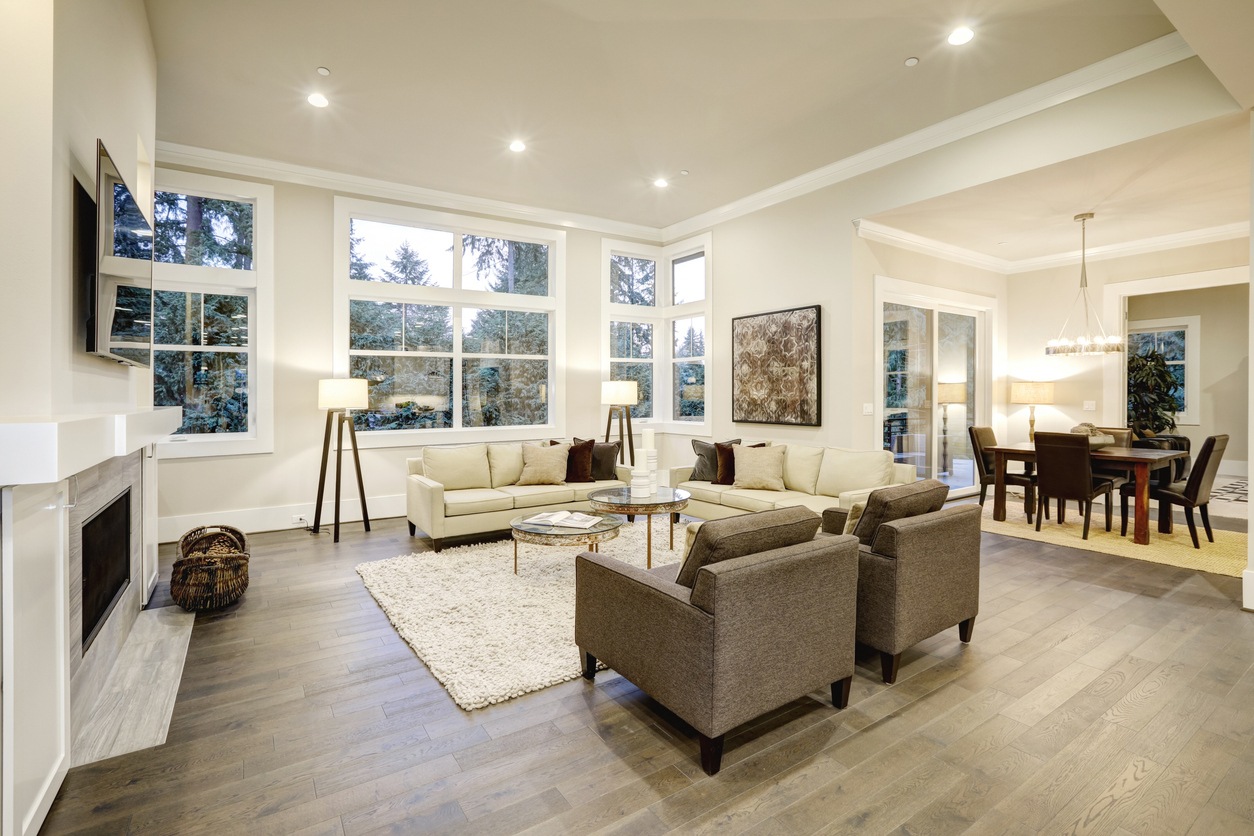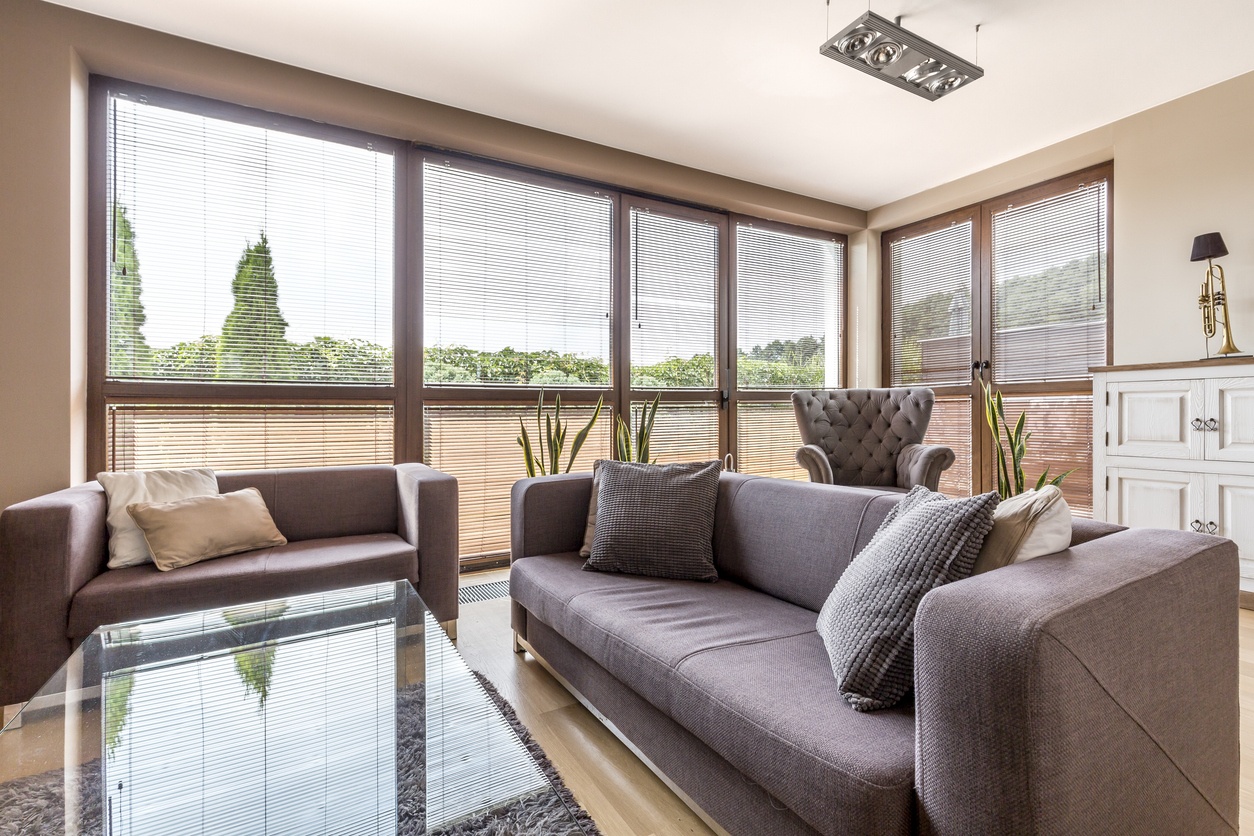Replacing the windows in your home can keep energy costs down while making this important feature more attractive and functional. Windows that stick, rattle, let in air when shut, or are warped can detract from your home’s value, making it less comfortable to live in.
Replacement windows come in many different styles, materials, and glass types, with two of the more popular materials being wood and vinyl for the frame. Both wood and vinyl windows have positive attributes, but they look and function very differently. We outline these differences below so that you can make a more informed decision about which will be better in your home.
Key takeaways:
The debate over wood vs vinyl windows often comes down to upfront cost versus aesthetic appeal, maintenance requirements, and other factors. Here is a clear answer:
Appearance: Wood windows offer a classic, traditional look and can be painted or stained, emphasizing their natural beauty. Vinyl windows have a more limited, often plastic appearance, best suited for modern homes.
Maintenance: Vinyl windows are nearly maintenance-free, offering excellent weather resistance. Wood windows require regular care (sanding, repainting, sealing) to prevent rot and degradation.
Durability: While a wood frame with proper cladding can last around 30–60 years, vinyl windows can last around 20-40 years.
Energy Efficiency: Both are energy-efficient windows. Neglecting a wood window’s maintenance can compromise its sealing, leading to heat transfer, while vinyl maintains its efficiency with less effort, offering excellent insulation.
Cost: Vinyl windows are the less expensive option, making them a budget-friendly solution and significantly lowering your overall material and installation cost.
Pros and Cons of Wood vs Vinyl Windows
The advantages and disadvantages of each window frame material should be weighed carefully before you decide between a vinyl window vs wood window.
Vinyl Windows Pros and Cons

Pros
- + Low-maintenance and great weather resistance
- + Less expensive and budget-friendly
- + Will not burn in a fire, splinter, or rot
- + Easier to install (requires proper installation for best results)
- + Energy-efficient (contributes to high energy savings)
- + Improves resale value of home
Cons
- - Will melt in high temperatures
- - Can warp with expansion
- - Will not enhance security of the home
- - Fewer options for achieving the desired aesthetic appeal
- - Plastic appearance (some vinyl can mimic the look of wood)
- - May not be as durable or long-lasting
Wood Windows Pros and Cons

Pros
- + Traditional appearance and natural beauty
- + Can be painted or stained any color
- + Many options to choose from
- + Durable and long-lasting
- + Improves resale value of home
- + Energy-efficient
Cons
- - High-maintenance
- - Burns in a fire
- - Can splinter or rot over time
- - More expensive
- - Harder to install
- - Will not enhance security of the home
Wood Windows vs Vinyl Cost
One of vinyl windows’ biggest selling points is their lower cost compared to wood. The average vinyl window price is significantly lower than wood. This is true for both the raw material and the labor required for installation, making vinyl a budget-friendly option for homeowners looking to upgrade. Conversely, wood replacement cost is higher due to the price of the lumber and the more complex, time-consuming installation process. These are the average national costs per window:
Wood Window Cost: $600 - $2,000
Vinyl Window Cost: $350 - $800
Comparison Table: Wood vs Vinyl Windows
The table below shows the most important aspects to consider when deciding on the best window for your home:
Factor | Wood | Vinyl |
Cost | $$$ | $$ |
Energy Efficiency | May splinter or rot, which can create air gaps for heat and cold to pass through if not well-maintained. | Can be hollow or filled with foam, which can increase its natural insulation properties. |
Aesthetics & Design | Most options and a more classic, traditional look. Can be painted any color or stained to show off the natural wood grain. | Fewer options for customization but come in a range of sizes and thicknesses of frame. Mostly come in white, but can be special ordered in a few other colors. |
Installation | Harder and more time-consuming due to weight, detailed trim work, and need for a perfect fit. | Easier and quicker due to the lightweight nature of the frame and standardized sizes. |
Durability (Lifespan) | 30–60 years | 20–40 years. |
Maintenance | High-maintenance | Low-maintenance |
Wood or Vinyl Windows? How to Decide
The ultimate decision between wood and vinyl windows depends on your priorities, like budget, long-term maintenance commitment, and aesthetic requirements.
Wood Windows: If your priority is a traditional appearance, the ability to customize your frame color, or you own a historic home, then wood windows are the better option, provided you accept the higher cost and commitment to maintenance.
Vinyl Windows: If you prioritize the lowest upfront cost, minimal long-term maintenance requirements, and a material that has strong weather resistance and will not rot, then vinyl windows are the superior choice. They are a practical, budget-friendly, and energy-efficient solution
Both options are a major improvement over old, inefficient units, and both can significantly improve the resale value of the home and reduce your energy bills.
FAQs
The main disadvantages of vinyl windows include a limited range of color choices, a plastic appearance, and the potential for warping or cracking due to expansion and contraction in extreme temperature cycles. They are generally not paintable.
The life expectancy of a quality vinyl window typically ranges from 20 to 40 years. This depends heavily on the quality of the materials and the manufacturing process.
Neither material is definitively "better" than the other; the best choice depends entirely on your priorities. Vinyl is better if your main priorities are lower initial cost, minimal maintenance, and resistance to moisture/rot.
The cons of wood windows center on cost and maintenance. They are more expensive than vinyl, require regular painting, staining, or sealing to prevent rot, warping, and insect damage, and are not fire-resistant.
Yes, wood windows can increase home value by improving energy efficiency and curb appeal. However, wood windows are often seen as a premium, high-end feature, and can provide a greater boost to the perceived value of an upscale or historic property. On average, wood windows deliver a ROI of 70%.
Laura Madrigal is the Home Design Specialist at Fixr.com, dedicated to identifying and analyzing significant changes within residential design. She is the author of leading trends reports on interior design, kitchen, and bathroom, and her insights have been featured in publications like Realtor and the New York Post.
![Wood vs Vinyl Windows: Which Frame is Better for Your Home? [2026 Guide]](https://assets.fixr.com/wood-windows-living-room-1764172180.jpg)